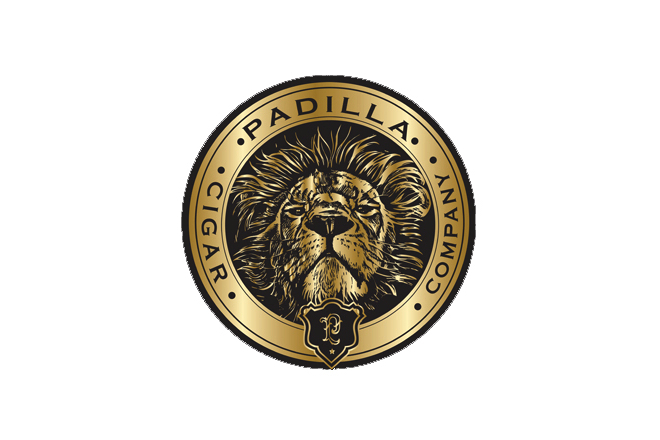Back in May of 2012, Ernesto Padilla decided to, for lack of a better term, “blow up” his entire cigar portfolio and begin again. Gone were such staples as 1932, Artemis, Dominus and Miami, replaced with two new blends out of Miami, Invictus and a Maduro line. Immediately after that, it was announced that Oliva Cigar Company would be distributing all of Padilla’s cigars.
Prior to that announcement and IPCPR, it was revealed that Oliva would be producing a new Padilla cigar using all Oliva tobacco that was to be sold only in the European market. The Premier Cru was formally introduced in September at the Inter-Tobac Trade Fair in Dortmund, Germany.
Here is the original press release from late May:
May 30, 2012 (Hialeah, FL) — Padilla Cigar Company is proud to announce yet another collaboration with Oliva Cigar Company following the recently 93 rated Padilla Studio-Tobac Limited Edition. Since the inception of the Padilla brand, Ernesto Padilla (brand owner), has worked on several successful projects with the Miami Lakes, Florida based Oliva Cigar Company. Oliva will manufacture and distribute the new Padilla Premier Cru cigars to be sold exclusively in the European market. The Padilla Premier Cru will feature the most premium fillers from the Oliva Family Tobacco Farms in Nicaragua. The superb wrapper will feature a Habano tobacco seed grown in the Ecuadorian Oliva plantations. The Padilla Premier Cru will be available in 3 different sizes those being Robusto, Torpedo, and a Double Toro. The cigars will range in price from €8 – €10. Padilla Premier Cru will be introduced this September at the Inter-Tobac Trade Fair in Dortmund, Germany and will be available through all of Oliva’s European distributors. German distributor Wolfertz, GMBH and Dutch distributor Van Horssen, BV have already agreed to begin sales this fall.
Wikipedia provides detail into the use of the word Cru:
Cru is a French wine term which is traditionally translated as “growth”, as it was originally the past participle of the verb “croitre” (to grow). As a wine term it is closely connected to terroir in the sense of an “extent of terrain having a certain physical homogeneity . . .considered from the point of view of the nature of the soil as communicating a particular character to its produce, notably to wine”. It may thus be defined as: “Terroir as a place of production”.
The three vitolas of Padilla Premier Cru are:
- Robusto (5 3/4 x 50)
- Double Toro (6 x 60)
- Torpedo (6 x 54)
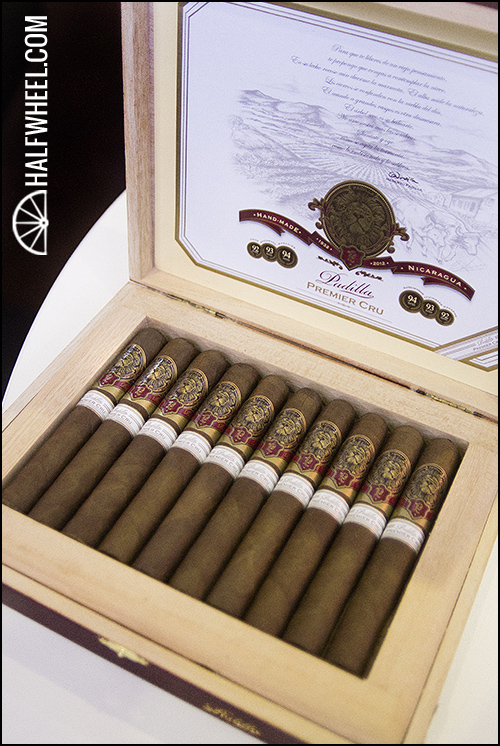
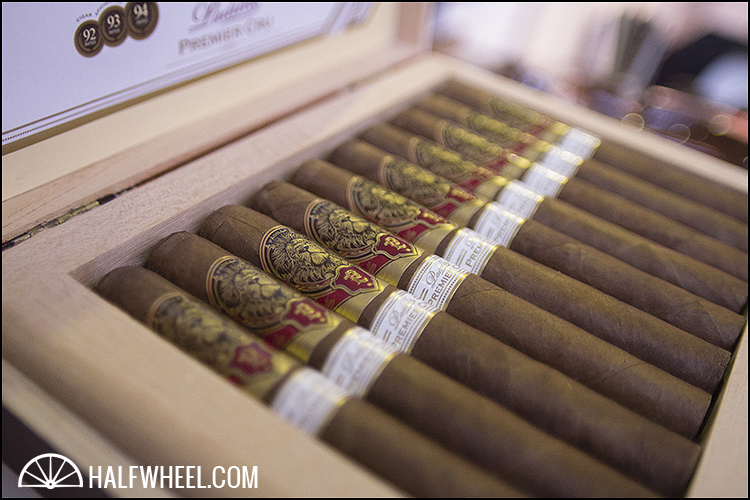
_______________________________________________________________________
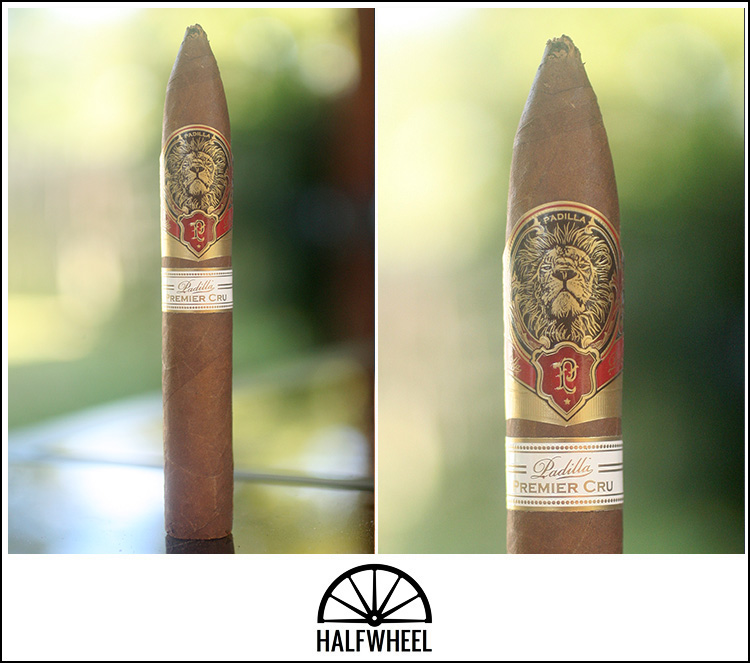
-
Cigar Reviewed: Padilla Premier Cru Torpedo
-
Country of Origin: Nicaragua
-
Factory: Tabacalera Oliva de Nicaragua S.A. (TABOLISA)
-
Wrapper: Ecuadorian Habano
-
Binder: Nicaragua
-
Filler: Nicaragua
-
Size: 6 Inches
-
Ring Gauge: 54
-
Vitola: Torpedo
-
MSRP: €9.00 (Boxes of 10, €90.00)/div>Date Released: September 14, 2012Number of Cigars Released: Regular ProductionNumber of Cigars Smoked For Review: 2
The Premier Cru is a solid looking cigar with a velvety smooth wrapper that is coffee bean brown in color. It has a very nice heft to it when held in the hand and is almost rock hard when squeezed. There is almost no oil present and the Premier Cru is almost seamless. The aroma off of the wrapper is a combination of pungent barnyard, raisins, coffee and dark chocolate.
_______________________________________________________________________
The Padilla Premier Cru starts out the first third immediately with flavors of espresso, dark slightly bitter chocolate, oak and earth. There is a nice raisin sweetness interspersed with the other flavors and it adds a nice complexity to the profile throughout the first third. However, there is only a tiny amount of pepper on the retrohale and almost none at all in the mouth. Despite the hardness of the roll when squeezed, the draw is perfect and the burn is giving me no problems at all either. The ash is well formed, and smoke production is slightly above average. The strength goes nowhere fast and ends the first third just under the medium mark.
Coming into the second third of the Premier Cru Torpedo and there seems to be a growing amount of black pepper on the retrohale, although there is still almost none evident on the tongue or lips. Flavors are still consistent from the first third: bitter chocolate, earth, wood and espresso. The raisin sweetness has morphed a bit into less of a fruit note and more of a maple note, but either way: it is not as strong as in the first third and seems to be on a downward trend. Construction-wise, the burn and draw are fine, while smoke production remains above average. The strength is still only at a solid medium and I would be surprised if it goes much higher than that.

The final third of the Padilla is essentially the same as the first two with virtually the same flavors: espresso, slightly bitter dark chocolate, oak and earth. Good flavors, but there is almost no change up at all. The pepper on the retrohale has receded a bit from the second third and the sweetness is quite diminished as well reverting to a background note. Construction is great until the end, and as expected, the strength ends still in the solid medium range.
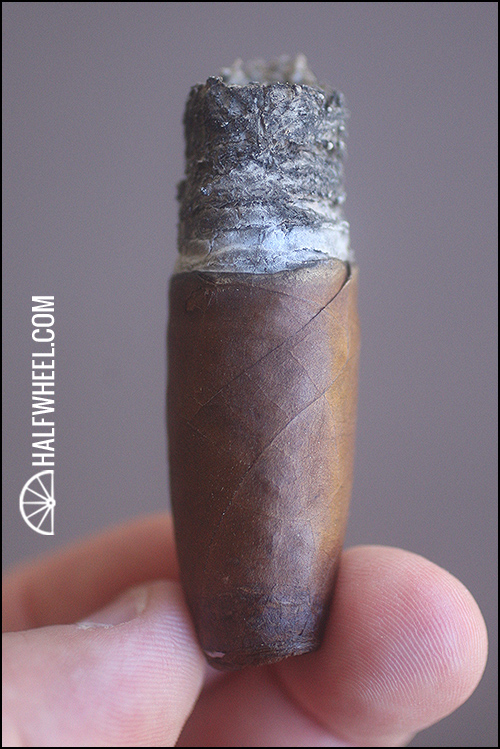
_______________________________________________________________________
Final Notes:- As mentioned above this is the second or third time Padilla has released an Oliva-made cigar in the past year, the first example being last year’s Padilla/Studio Tobac Figurado and the other being the Padilla Reserva.
- Interestingly, Ernesto Padilla studied at the Art Institute of Philadelphia and does all of the designs for Padilla himself. The detail on the inside lid of the box of the Premier Cru is a drawing he did of tobacco field and farm.
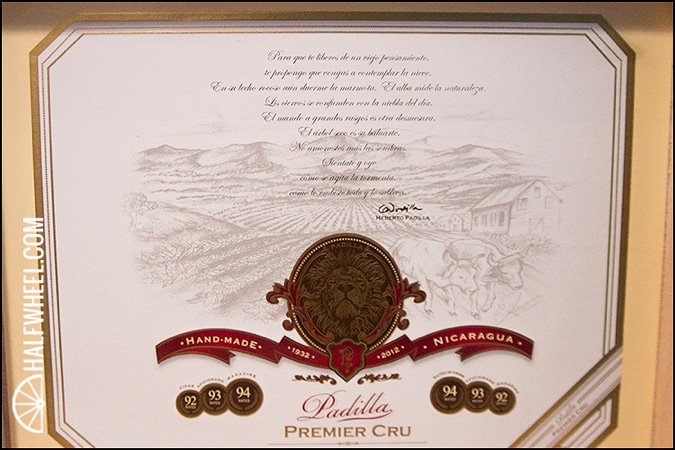
- The ash is extremely well formed, and the construction overall is excellent for every sample I smoked. Not exactly a surprise, considering the source, but still wonderful to see regardless.
- I really do not like the white secondary white band in conjunction with the original Padilla logo on top and the darkness of the wrapper, it just seems to stand out and contrast a bit too much for my tastes.
- Unlike the Padilla/Studio Tobac Figurado, there is absolutely no indication anywhere on the cigar that this is an Oliva-made product. In fact, the only thing I saw that came close was on the cello, which had an Oliva logo above the name, but this could have been put on by the store that sold them:

- I find it very interesting that most of the manufacturers making specific cigars for the European market (Oliva, Quesada, etc) are producing smaller ring gauges, as that is what is traditionally sold in Europe, but every one of these new Padillas are over 50 ring gauge. The demand for large ring gauges is without a doubt picking up.
- Some of the cigars used for this review were traded for, one was given by a representative.
- The average smoking time for both samples was one hour and 35 minutes.
_______________________________________________________________________
The Bottom Line: This cigar has the very definition of a dark profile with earth, dark chocolate and espresso the dominant notes. The profile is consistent, but not complex flavor-wise, and the major notes don’t really change over the course of the smoke. In fact, the only major change is the amount of pepper, which ebbs and flows throughout the cigar, and is strongest in the middle third. Of course, the major problem is the fact that you seriously can’t get them in the US, as they have to be purchased from a dealer in Europe. A good cigar, and well worth trying if you can find them, but both Padilla and Oliva make better smokes — like the recently released Oliva Atlantic 15th and the Padilla Invictus for example — that are by all accounts cheaper and quite a bit easier to get ahold of.
Final Score: 85


